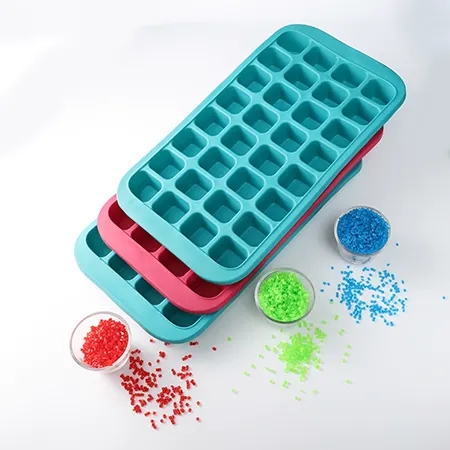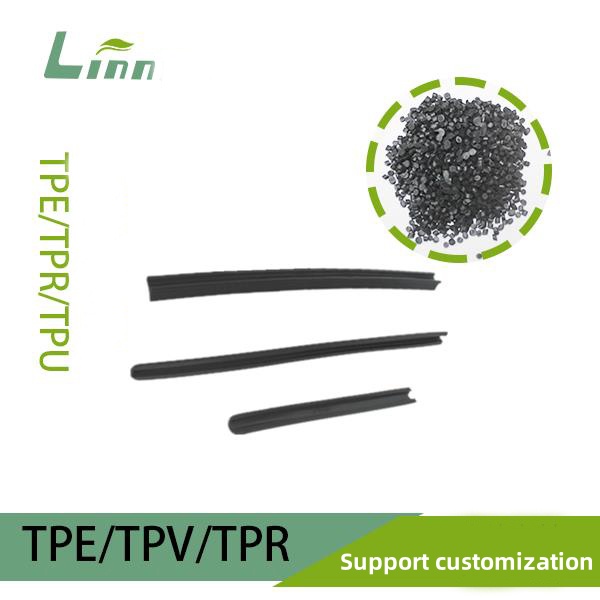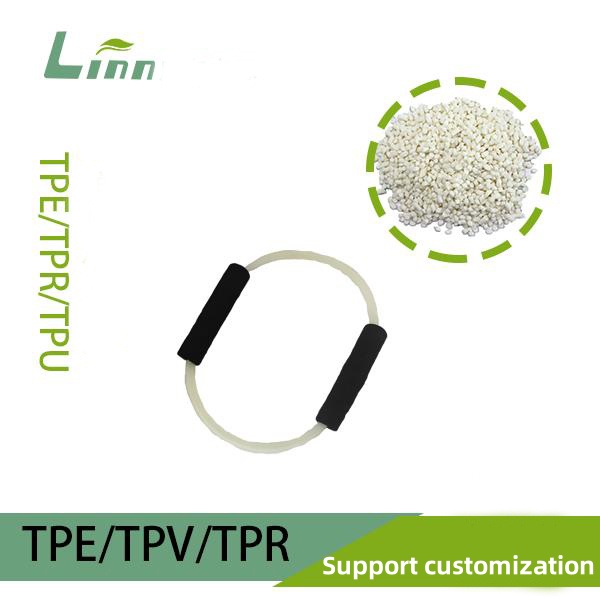Whenever I pick up a TPE (Thermoplastic Elastomer) product—be it a soft phone case or a comfy insole—I can’t help but marvel at its versatility. As a materials engineer who’s been knee-deep in the TPE industry for over a decade, I’ve developed a genuine fondness for this material that blends rubber’s elasticity with plastic’s processability. TPE is everywhere today, from household goods to medical devices and car parts, but not all TPE products are created equal. Consumers often wonder: Is TPE material any good? How do I spot the quality ones? Today, I’m here to chat with you like an old friend, diving into how to judge the quality of TPE material, sharing practical tips from appearance to performance, and equipping you with the know-how to make savvy choices in a crowded market.

Why Is TPE So Popular?
Before we get into spotting quality TPE, let’s talk about why this material is such a star. TPE is a family of block copolymers with hard segments (like styrene) and soft segments (like butadiene or polyolefin), with common types including SEBS-based, TPU-based, and SBS-based. Its standout features make it a favorite across industries:
Elasticity and Softness: TPE bounces back like rubber and feels soft, perfect for products needing a comfortable touch.
Processing Flexibility: It’s easy to mold or extrude, ideal for complex designs.
Eco-Friendliness: High-quality TPE is non-toxic and recyclable, meeting RoHS and REACH standards.
Durability: TPE excels in wear and weather resistance, especially TPU-based variants.
That said, TPE quality varies widely due to differences in formulation, processing, and application. Poor-quality TPE can have issues like strong odors, quick aging, or weak elasticity, ruining the user experience. Below, I’ll guide you through evaluating TPE quality using appearance checks, texture tests, performance assessments, odor and safety, and other supporting methods.

How to Judge the Quality of TPE Material?
1. Appearance Checks: The First Clue
A TPE product’s appearance is its initial handshake with quality. A close look can reveal a lot about its craftsmanship.
Surface Gloss: High-quality TPE products have a soft, semi-glossy finish, smooth and flawless. SEBS-based TPE is silky, while TPU-based has a subtle sheen without greasiness. Low-grade TPE (often mixed with PVC or cheap fillers) may look overly shiny or grainy.
Color Uniformity: Premium TPE products show even color distribution with no patches or streaks. Inferior ones, due to excessive fillers or poor mixing, may have color blocks or uneven tones.
Mold Marks: Quality TPE items have fine, smooth mold parting lines and clean edges without burrs. Budget TPE products might show rough edges or flash marks.
Transparency (if applicable): For transparent or translucent TPE items (like medical tubing), high-quality TPE is clear with no cloudiness or impurities. Poor-quality ones may appear hazy due to contaminants.
My Experience: While shopping for a TPE yoga mat, I noticed one model had an oily sheen and jagged edges. A closer check confirmed it was laced with PVC. Quality TPE feels like “smooth jade”—refined and natural.
2. Texture Tests: Feeling the Balance of Softness and Elasticity
The magic of TPE lies in its tactile qualities. Premium TPE stands out in softness, elasticity, and overall feel. Here are some hands-on tests:
Press and Rebound: Lightly press the TPE surface with your finger. Quality TPE offers quick, uniform rebound, akin to soft rubber, without stickiness. Low-grade TPE may rebound slowly, deform, or feel “dead” and rigid.
Stretch Test: For stretchable TPE items (like elastic bands), gently pull and release. High-quality TPE snaps back to shape with minimal deformation. Inferior ones may stretch permanently or break.
Touch Temperature: At room temperature, TPE feels warm and smooth, unlike PVC’s cold or tacky sensation. This difference is especially clear in winter.
Surface Friction: Quality TPE is smooth yet grippy, offering balanced friction. Poor TPE might be overly sticky or slick, affecting usability.
Pro Tip: If possible, lightly scrape the TPE surface with your fingernail. Quality TPE resists visible scratches, while low-grade ones (mixed with PVC or excess fillers) may show white marks or powdery residue.

3. Performance Assessments: Durability and Functionality
TPE’s true quality shines in real-world use, from wear resistance to long-term performance. Here are some practical tests:
Wear Resistance: High-quality TPE, especially TPU-based, withstands abrasion, maintaining a smooth surface after prolonged use. For example, TPE shoe soles or luggage wheels should show minimal wear on rough surfaces. Inferior TPE may quickly flatten or crack.
Weather Resistance: Premium TPE resists aging, staying flexible and color-stable under sunlight or heat. Low-quality TPE may yellow or harden within months. Test by exposing a TPE item to sunlight for a few weeks and checking for changes.
Elasticity Retention: Quality TPE retains elasticity after repeated compression or stretching. For instance, a TPE yoga mat or pillow should maintain bounce after heavy use. Poor TPE loses resilience fast.
Chemical Resistance: Good TPE resists sweat, oils, and other chemicals without becoming sticky or degrading. Wipe the item with a damp cloth and observe for discoloration or tackiness.
Real-World Case: I compared two TPE phone cases. One stayed pristine after six months, while the other turned yellow and sticky in two months. The latter was likely mixed with low-grade SBS and excess plasticizers, with poor weather resistance.
4. Odor and Safety: Prioritizing Health
TPE’s safety is critical, especially for medical, infant, or food-contact products. Here’s how to assess its safety:
Odor Test: Quality TPE has no strong smell or a faint plastic scent at room temperature. Low-grade TPE (possibly mixed with PVC or harmful plasticizers) emits a sharp chemical odor, especially when new or warm. Sniff lightly near the item, keeping a safe distance.
Environmental Certifications: Premium TPE products meet RoHS, REACH, or FDA standards, often noted on packaging or manuals. Inferior ones may lack certifications or use banned substances like phthalates.
High-Temperature Test: Place the TPE item in a 40-50°C environment (like a car interior). Quality TPE remains odor-free, while poor ones may release pungent volatiles.
My Advice: For TPE products like baby toys or medical tubes, prioritize those labeled “food-grade TPE” or “non-toxic certified” and request third-party test reports.

5. Other Supporting Methods: Digging Deeper
Beyond direct inspections, these methods can further confirm TPE quality:
Product Labels and Specs: Quality TPE products clearly state the material, like “SEBS TPE” or “TPU.” Vague terms like “high-elasticity material” may indicate low-grade substitutes. Check packaging or the manufacturer’s website for details.
Brand Reputation: Reputable manufacturers prioritize high-molecular-weight SEBS or TPU for better quality. Off-brand or ultra-cheap products often use inferior TPE or PVC mimics.
Burn Test (Use with Caution): If you have a discarded TPE sample, a small burn test (only in a controlled, professional setting) can help. Quality TPE burns with a light odor, steady flame, and minimal ash; PVC produces thick black smoke and a pungent smell. This isn’t practical for everyday use and is only a last resort.
User Reviews: Check product reviews, focusing on durability, odor, and comfort. Low-quality TPE items often get complaints about aging or smells.
My Story: While choosing a TPE teether for a friend’s baby, one model claimed “food-grade TPE” but had a harsh odor and no certifications. I opted for a REACH-certified teether with a neutral scent, and it’s been a safe, reliable choice.
TPE vs. Other Common Materials: A Comparison
To make quality assessment easier, here’s a comparison table of TPE and other materials, covering appearance, performance, and safety:
|
Material |
Appearance |
Texture |
Performance |
Odor |
Safety |
|---|---|---|---|---|---|
|
Quality TPE |
Semi-glossy, smooth, flawless |
Soft, great rebound, warm |
Wear-resistant, weather-resistant, durable elasticity |
None or faint plastic |
Non-toxic, RoHS/REACH compliant |
|
Low-Grade TPE |
Oily or grainy, uneven color |
Sticky or rigid, poor rebound |
Wears quickly, ages fast |
Sharp chemical smell |
May contain banned plasticizers |
|
PVC |
Greasy shine, many burrs |
Hard or tacky, low elasticity |
Noisy, ages poorly |
Strong chemical odor |
May contain phthalates |
|
Silicone |
Matte, refined |
Soft, slightly less elastic |
Heat-resistant, good weatherability |
Odorless or faint |
Food-safe, but costly |
|
Rubber |
Matte, slightly rough |
Firm, moderate elasticity |
Moderate wear, may flake |
Rubber smell |
Moderate safety |
Quick Note: TPU-based TPE is more wear-resistant, ideal for high-stress uses (like soles); SEBS-based TPE is softer, perfect for comfort-driven products (like pillows).
How to Choose High-Quality TPE Products?
Spotting quality TPE is just the start—here’s how to pick products that deliver value:
Define the Use Case: Match TPE type to your needs. Choose food-grade SEBS TPE for medical devices or TPU TPE for sports shoe soles.
Check Certifications: Prioritize products with RoHS, REACH, or FDA certifications, and request third-party test reports.
Hands-On Testing: Whenever possible, test the product’s feel, elasticity, and odor before buying. For a TPE yoga mat, press to check rebound and sniff for odors.
Read Reviews: Look at user feedback on durability and odor to avoid duds.
Warranty Support: Opt for manufacturers offering warranties, as quality TPE products typically have a long lifespan with reliable after-sales service.
My Experience: While selecting TPE sealing rings, a cheap option had a strong odor and cracked after two months. Switching to a REACH-certified ring, it’s still going strong after three years. Certifications and reputation are non-negotiable!

Common TPE Quality Issues and Solutions
Here’s a table of common TPE issues and solutions for quick reference:
|
Issue |
Possible Cause |
Solution |
|---|---|---|
|
Tacky surface |
Plasticizer exudation or low-quality white oil |
Choose TPE with high-purity white oil, verify REACH certification |
|
Strong odor |
Mixed with PVC or banned plasticizers |
Select non-toxic TPE, prioritize FDA-certified products |
|
Poor elasticity or deformation |
Low-molecular-weight TPE or excess fillers |
Opt for high-molecular-weight SEBS/TPU, check filler content |
|
Rapid aging |
Lack of antioxidants or UV protection |
Choose TPE with antioxidants, test weatherability per ASTM G154 |
|
Rough surface |
Poor compounding or mold issues |
Select products from reputable manufacturers, check mold polish quality |
Applications and Future of TPE
High-quality TPE’s versatility makes it a staple in:
Household Goods: Phone cases, yoga mats, and seals, valued for comfort and durability.
Medical Devices: Infusion tubes and masks, requiring non-toxicity and biocompatibility.
Automotive Parts: Weatherstrips and interior components, needing weather resistance and elasticity.
Baby Products: Teethers and bottle nipples, prioritizing safety.
Per Grand View Research, the global TPE market is expected to hit $30 billion by 2030, fueled by eco-conscious demand and performance advancements. Quality TPE products are increasingly the go-to for consumers and manufacturers alike.

Frequently Asked Questions
Here are some common questions and answers to deepen your TPE knowledge:
Q1: Is TPE better than silicone?
A: TPE is more cost-effective and processable, ideal for everyday items; silicone excels in heat resistance and food-grade safety but costs more. Choose TPE for comfort products, silicone for high-heat or food-contact uses.
Q2: Why does my TPE product smell bad?
A: It might contain PVC or low-quality plasticizers. Check for REACH or FDA certifications and ensure a neutral scent. If the odor persists, replace the item and contact the seller.
Q3: How do I know if a TPE product is durable?
A: Test wear resistance (surface smoothness after rubbing), weatherability (color stability in sunlight), and elasticity (recovery after compression). Quality TPE passes these tests.
Q4: Are TPE products recyclable?
A: High-quality TPE is recyclable and eco-friendly. Low-grade TPE with impurities may not be. Look for products labeled “recyclable” or with environmental certifications.
Q5: Are cheap TPE products reliable?
A: Budget TPE items may mix PVC or cheap fillers, leading to odors and quick aging. Opt for mid-to-high-end products with certifications and strong reviews for assured quality.
Final Thoughts
Judging the quality of TPE material is like embarking on a treasure hunt in the world of polymers. As a TPE enthusiast, I’m thrilled to share these tips to help you navigate the market with confidence and find products that truly shine. TPE isn’t just a material—it’s a bridge to comfort and sustainability in our daily lives. I hope this guide becomes your trusty map, leading you to purchases that are both reliable and delightful. Got more TPE questions? Drop a comment, and let’s dive deeper into this soft, resilient universe together!





